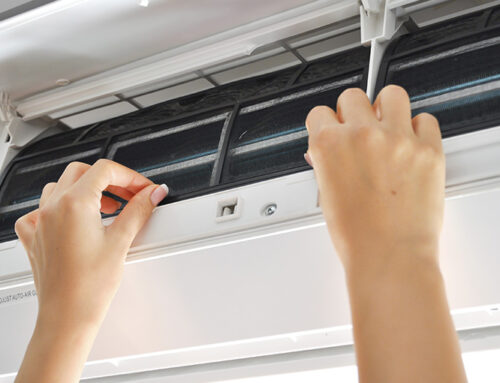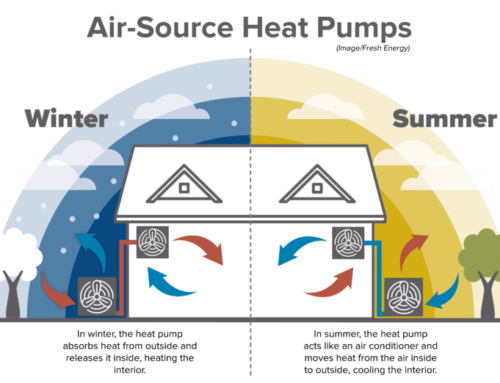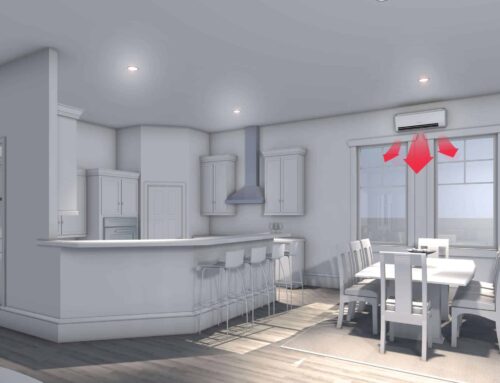For many years, the residents of Washington County have relied on a mix of heating sources to keep their homes warm during the harsh winter months. Let’s take a closer look at these traditional methods:
1. Fuel Oil (Heating Oil):
Fuel oil, also known as heating oil, has been a staple for many households in Washington County. This liquid petroleum product is burned in a furnace or boiler to produce heat. It’s particularly common in rural areas where natural gas infrastructure is limited or nonexistent.
- Pros: Heating oil can produce a lot of heat, making it effective for keeping homes warm even during the coldest months. It’s also relatively easy to store in large quantities, ensuring that homeowners have enough fuel on hand throughout the winter.
- Cons: The cost of heating oil can be volatile, often rising during the winter months when demand is highest. Additionally, heating oil furnaces and boilers are less efficient compared to modern alternatives, leading to higher energy consumption and costs. There are also environmental concerns, as burning fossil fuels contributes to air pollution and carbon emissions.
2. Propane:
Propane is another popular heating option in Washington County, especially in areas where natural gas isn’t available. Propane is stored in large tanks and is used to fuel furnaces, boilers, water heaters, and even cooking appliances.
- Pros: Propane is a versatile fuel that can be used for a variety of home energy needs. It burns cleaner than fuel oil and produces fewer greenhouse gas emissions. Propane systems can also be very efficient, depending on the equipment used.
- Cons: Like heating oil, propane prices can be unpredictable and may rise during the winter. Propane systems also require regular maintenance, and the cost of refilling tanks can add up over time. Additionally, while cleaner than oil, propane is still a fossil fuel and contributes to carbon emissions.

3. Electricity:
Some homes in Washington County rely on electric heating, which can include electric furnaces, baseboard heaters, or space heaters. Electricity is often seen as a convenient option since it’s widely available and easy to use.
- Pros: Electric heating systems are generally easy to install and maintain. They don’t require fuel storage, and with the right equipment, they can be highly efficient. Additionally, electric heating doesn’t produce direct emissions, making it cleaner at the point of use.
- Cons: Electric heating is often the most expensive option, especially in regions where electricity costs are high. This is because electric heating systems are typically less efficient than systems that use other fuels, meaning they consume more energy to produce the same amount of heat. Furthermore, the environmental impact of electric heating depends on the energy source used to generate the electricity; if the electricity comes from fossil fuels, the overall carbon footprint can be significant.
4. Wood:
Given the rural nature of much of Washington County, many residents also use wood or wood pellets to heat their homes. Wood stoves and pellet stoves provide a traditional and sometimes cost-effective way to stay warm.
- Pros: Wood is a renewable resource, and for those with access to forests or woodlots, it can be a very inexpensive heating option. Wood stoves can create a cozy, rustic atmosphere that many people find appealing.
- Cons: Wood heating requires a lot of labor, including chopping, stacking, and storing wood. It also requires regular maintenance, such as cleaning out ash and creosote buildup. Burning wood can produce a significant amount of particulate matter and other pollutants, which can contribute to poor indoor and outdoor air quality. Additionally, wood stoves are generally less efficient than modern heating systems, leading to higher fuel consumption.

The Challenges of Traditional Heating Methods
While these traditional heating methods have served Washington County residents well for many years, they come with a number of challenges that make them less desirable in today’s world.
1. Cost Variability:
One of the biggest challenges with traditional heating fuels like oil and propane is their price volatility. Prices can fluctuate significantly based on global markets, weather conditions, and geopolitical events. This unpredictability can make it difficult for homeowners to budget for heating costs, especially during particularly cold winters.
2. Efficiency Issues:
Many traditional heating systems, especially older ones, are not very efficient. They can consume a lot of fuel to produce the necessary heat, leading to higher energy bills. Inefficient systems also mean more frequent maintenance and the potential for breakdowns, which can be costly to repair.
3. Environmental Impact:
The environmental impact of traditional heating methods is becoming an increasing concern. Burning fossil fuels like oil and propane releases carbon dioxide, a greenhouse gas that contributes to climate change. Even wood, while renewable, can produce significant amounts of smoke and particulate matter, which contribute to air pollution.
4. Dependency on Fossil Fuels:
Traditional heating methods often rely on fossil fuels, which are finite resources. As the world moves towards renewable energy and sustainability, there is growing pressure to reduce dependence on fossil fuels. This shift is not only about reducing environmental impact but also about ensuring energy security in the future.
Cold Climate Heat Pumps: The Future of Home Heating
Given the challenges associated with traditional heating methods, many homeowners in Washington County are looking for alternatives that are more efficient, cost-effective, and environmentally friendly. One such alternative is the cold climate heat pump.
What is a Cold Climate Heat Pump?
A cold climate heat pump is a type of air-source heat pump specifically designed to operate efficiently in colder temperatures. Unlike traditional heat pumps, which can struggle to provide adequate heating in very cold weather, cold climate heat pumps are engineered to maintain high efficiency and performance even when outdoor temperatures drop well below freezing.
These systems work by extracting heat from the outside air (even in cold weather) and transferring it indoors to heat the home. In the summer, they can reverse the process to provide cooling, making them a versatile year-round solution.
Advantages of Cold Climate Heat Pumps
1. High Efficiency:
Cold climate heat pumps are among the most efficient heating systems available today. They can provide up to three times more heat energy than the electrical energy they consume. This high efficiency translates to lower energy bills, especially when compared to traditional electric heating or older fossil fuel systems.
2. Cost Savings:
While the initial installation cost of a cold climate heat pump can be higher than that of a traditional heating system, the long-term savings can be substantial. Homeowners can save on energy bills due to the system’s efficiency, and there are often rebates and incentives available to offset the upfront cost. Additionally, because these systems provide both heating and cooling, there’s no need to invest in separate systems for each function.
3. Environmental Benefits:
Cold climate heat pumps produce no direct emissions, making them a much cleaner option than fossil fuel-based heating systems. When paired with renewable energy sources like solar or wind, their environmental impact can be further reduced, helping homeowners lower their carbon footprint.
4. Year-Round Comfort:
One of the major benefits of cold climate heat pumps is their ability to provide both heating and cooling. This makes them a versatile solution for year-round comfort, eliminating the need for separate air conditioning units in the summer.
5. Reliability in Cold Weather:
Modern cold climate heat pumps are designed to operate efficiently even in extremely cold temperatures. Advances in technology have allowed these systems to extract heat from the air even when temperatures are as low as -15°F or lower. This reliability makes them a viable option for regions like Washington County, where winters can be harsh.
6. Lower Maintenance:
Cold climate heat pumps typically require less maintenance than traditional heating systems. There’s no need for fuel deliveries, and the systems themselves are generally simpler in design, with fewer moving parts that can wear out. Regular maintenance usually involves little more than cleaning or replacing filters and checking the system’s performance.
Transitioning to Cold Climate Heat Pumps: A Practical Guide
For homeowners in Washington County considering a switch to cold climate heat pumps, the transition can be straightforward, but it’s important to approach it with careful planning.
1. Assess Your Home’s Heating Needs:
The first step in transitioning to a cold climate heat pump is to assess your home’s heating needs. This includes evaluating the size of your home, its insulation, and your current heating system. A professional energy audit can help identify areas where your home could be more energy-efficient, which can, in turn, reduce the size and cost of the heat pump system you need.
2. Choose the Right System:
Not all cold climate heat pumps are the same, so it’s important to choose a system that’s appropriate for your specific needs. Consider factors like the size of your home, the average winter temperatures in your area, and whether you need a system that also provides cooling in the summer. Consulting with a reputable HVAC contractor who has experience with cold climate heat pumps is essential to ensure you select the right system.
3. Explore Incentives and Financing Options:
One of the barriers to adopting new heating technology can be the upfront cost. Fortunately, there are often rebates, tax credits, and financing options available to help offset these costs. New York State, for example, offers various incentives for homeowners who install energy-efficient heating systems, including cold climate heat pumps. Be sure to explore these options to reduce your out-of-pocket expenses.
4. Plan for Installation:
The installation process for a cold climate heat pump is generally straightforward, but it’s important to plan ahead. Depending on your home’s existing infrastructure, some modifications may be needed, such as adding ductwork or improving insulation. Working with a qualified installer will ensure that the installation is done correctly and efficiently.
5. Maintenance and Care:
While cold climate heat pumps require less maintenance than traditional systems, it’s still important to keep them in good working order. Regularly cleaning or replacing filters, checking refrigerant levels, and ensuring that the outdoor unit is free from debris are simple tasks that can help keep your system running smoothly. It’s also a good idea to have your system inspected by a professional annually to catch any potential issues early.
Case Study: A Homeowner’s Experience with Cold Climate Heat Pumps
To better understand the benefits of cold climate heat pumps, let’s take a look at a case study from a homeowner in Washington County who made the switch.
Background:
John and Mary, long-time residents of Washington County, lived in a 2,500-square-foot home built in the 1980s. For years, they relied on a fuel oil furnace to heat their home during the winter and window air conditioning units to stay cool in the summer. As energy costs began to rise, they found themselves spending more and more on heating oil and electricity, and they started to explore alternative heating options.
The Decision:
After doing some research and speaking with a local HVAC contractor, John and Mary decided to install a cold climate heat pump system. They were attracted by the potential cost savings, the environmental benefits, and the convenience of having a single system that could provide both heating and cooling.
Installation:
The installation process took about a week. The HVAC contractor installed a ducted cold climate heat pump system that connected to the existing ductwork in their home. They also added a new thermostat that allowed them to control the system remotely using their smartphone.
Results:
In the first winter after installation, John and Mary noticed a significant reduction in their heating costs. Their new heat pump system kept their home warm and comfortable, even on the coldest days, without the need for supplemental heating. In the summer, they enjoyed the convenience of central air conditioning without the noise and inefficiency of their old window units.
Over time, the energy savings from the heat pump system helped offset the initial installation cost, and they were pleased to know that they were contributing to a more sustainable future by reducing their reliance on fossil fuels.
The Future of Home Heating in Washington County
As more homeowners in Washington County and similar regions become aware of the benefits of cold climate heat pumps, it’s likely that we’ll see a continued shift away from traditional heating methods. This transition is being driven by a combination of factors, including rising energy costs, environmental concerns, and the desire for more efficient and reliable heating solutions.
Energy Independence and Security:
One of the long-term benefits of adopting cold climate heat pumps is the potential for greater energy independence. By reducing reliance on fossil fuels, homeowners can protect themselves from the price volatility and supply disruptions that can occur with oil and propane. This shift also supports broader efforts to transition to renewable energy sources, which can further enhance energy security.
Environmental Impact:
The environmental benefits of cold climate heat pumps are significant. By reducing greenhouse gas emissions and decreasing the demand for fossil fuels, these systems contribute to efforts to combat climate change. Additionally, as more renewable energy sources are integrated into the power grid, the carbon footprint of heat pump systems will continue to decrease.
Technological Advancements:
The technology behind cold climate heat pumps is continually evolving, with new advancements making these systems even more efficient and effective. For example, variable-speed compressors, advanced refrigerants, and smart thermostats are all innovations that are improving the performance of heat pumps in cold climates. As these technologies continue to develop, the case for adopting heat pumps will only grow stronger.
Conclusion: Embracing the Future with Cold Climate Heat Pumps
For homeowners in Washington County, New York, the choice of heating system is a critical decision that impacts not only comfort and cost but also the environment. While traditional heating methods like fuel oil, propane, and wood have served the region well for many years, the time has come to consider more modern, efficient, and sustainable options.
Cold climate heat pumps represent the future of home heating, offering significant advantages in terms of efficiency, cost savings, and environmental impact. By making the switch to this technology, homeowners can reduce their energy bills, decrease their carbon footprint, and enjoy reliable comfort year-round.
As the world continues to move towards a more sustainable future, the adoption of cold climate heat pumps in regions like Washington County is an important step forward. Whether you’re looking to save money, reduce your environmental impact, or simply upgrade your home’s heating and cooling system, a cold climate heat pump is an investment worth considering.
For those ready to take the plunge, now is the time to explore the options, take advantage of available incentives, and embrace the future of home heating with cold climate heat pump technology.




